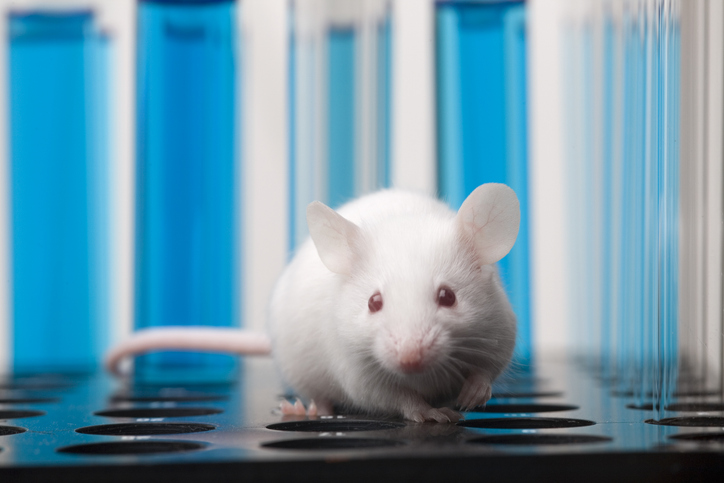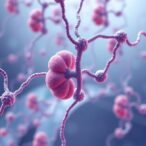The role of the gut-brain axis in Alzheimer’s disease (AD) has emerged over recent years as a possible target for therapeutics. But the mechanism linking the two remains to be fully elucidated. In particular, the role of the immune system is poorly understood. New research shows that Alzheimer’s disease is associated with altered immune parameters in the colons of the well-studied Alzheimer’s 5XFAD amyloid-β mouse model. The mice co-express five familial human AD mutations and have extracellular Aβ deposition, resulting in plaque formation in the brain and loss of pyramidal neurons.
“This paper brings the gut immune system to the forefront of neurodegenerative disease pathology,” says Daniel Winer, MD, associate professor at the Buck Institute. “Given its size and the cells’ ability to travel, it makes sense that those immune cells would have the ability to influence larger physiology.”
The research is published in Cell Reports in the paper, “Amyloid-B driven Alzheimer’s disease reshapes the colonic immune system in mice.” The work also suggests that feeding the mice a high fiber diet reduces Alzheimer’s-related frailty, including tremor.
“As far as we know, this is the deepest investigation of the gut immune system in a model of neurodegenerative disease,” notes Julie Andersen, PhD, professor at the Buck Institute. “We look forward to studying its impact in other diseases including Parkinson’s and multiple sclerosis.”
Using single-cell RNA sequencing coupled to extensive spectral-tuning flow cytometry validation of the colon immune compartment in the 5XFAD mice, the team found several AD-associated changes including in B cell (plasma cells, specifically) activity.
“Remarkably, we found that these immune cells in the brain border which recognize bacteria living in the intestines were accumulating in the Alzheimer’s disease brain,” notes Priya Makhijani, PhD, a post doc in the Winer and Andersen labs.
Makhijani and team found that this gut immune cell receptor’s binding partner, a well-studied chemokine known for migration, was produced at higher levels in the glia. More specifically, the authors note that levels of CXCR4+ antibody-secreting cells were reduced in 5XFAD colons. This change, they assert, “corresponds with accumulating CXCR4+ B cells and gut-specific IgA+ cells in the brain and dura mater, respectively.”
The migratory signature was also identified in human Alzheimer’s disease brains via data mining of previously conducted studies. They explain: a chemokine ligand for CXCR4 (CXCL12) was expressed at higher levels in the 5XFAD brain and in in silico-analyzed human AD brain studies, supporting altered neuroimmune trafficking. The team conducted blocking experiments in the axis using a small molecule drug, suggesting that a new long-range mechanism might be acting along the gut-brain axis.
The benefits of a high fiber diet
Feeding the animals the anti-inflammatory pre-biotic fiber inulin restored balance in the gut of the mice. The inulin prebiotic fiber diet could, the authors say, “expand gut IgA+ cells, rescue peripheral Treg levels, reduce dysbiosis, improve serum microbial metabolite levels, and attenuate overall AD-associated frailty.”
“We found these migrating cells were replenished in the gut and that Alzheimer’s disease-related frailty, including the tremor trait, was reduced in the animals,” notes Makhijani. Noting that inulin makes short chain fatty acids and other metabolites that concentrate in the gut and can also circulate systemically, she says the diet improved gut health and reduced chemokine signaling in the brain.
Winer notes that while the high fiber diet did not consistently reduce the levels of plaques in the mice’s brain, it did impact overall well-being.
Researchers say more work is needed to see if those changes are a response to brain alterations or whether they drive the disease itself. One possibility is that age-related insults might trigger Alzheimer’s disease-causing inflammation in the brain with chemokines signaling the gut immune system for help in dealing with the insult. “In the beginning the process is likely protective, but over time the gut becomes compromised, setting the stage for more dangerous types of bacteria to flourish, which fuels inflammation throughout the body.”
Makhijani is eager to explore the potential of understanding and/or altering the gut microbiome in the context of disease. “Maybe there is a microbiome that signals an increased risk of neurological disease. Perhaps we’ll be able to identify specific bacteria that set off immune system inflammation. What if we can inhibit the signaling chemokines early versus late in the disease process? Which would be protective for the whole system? This paper provides so many avenues for further exploration.”



